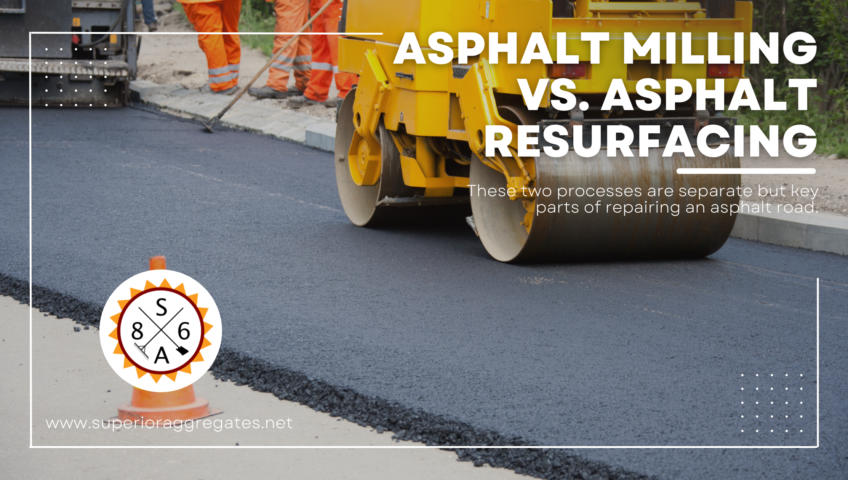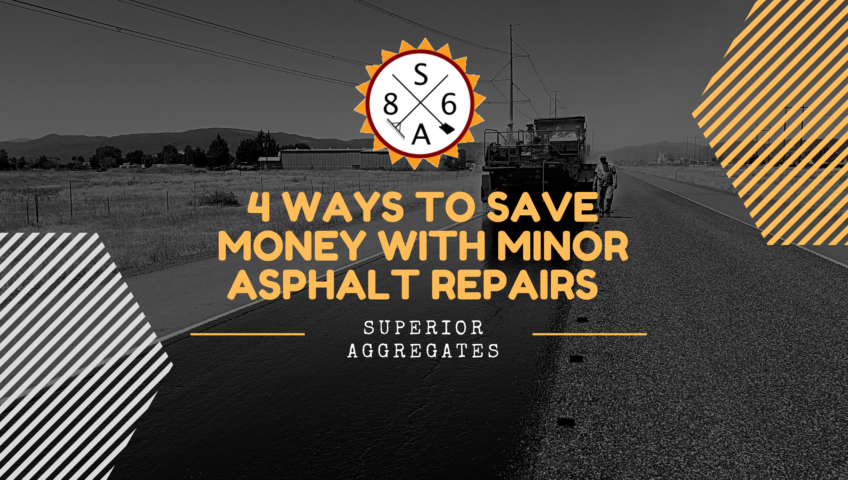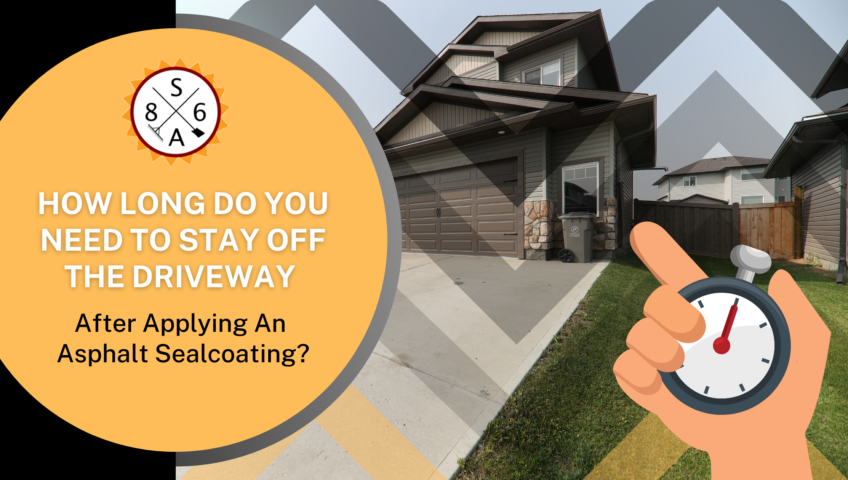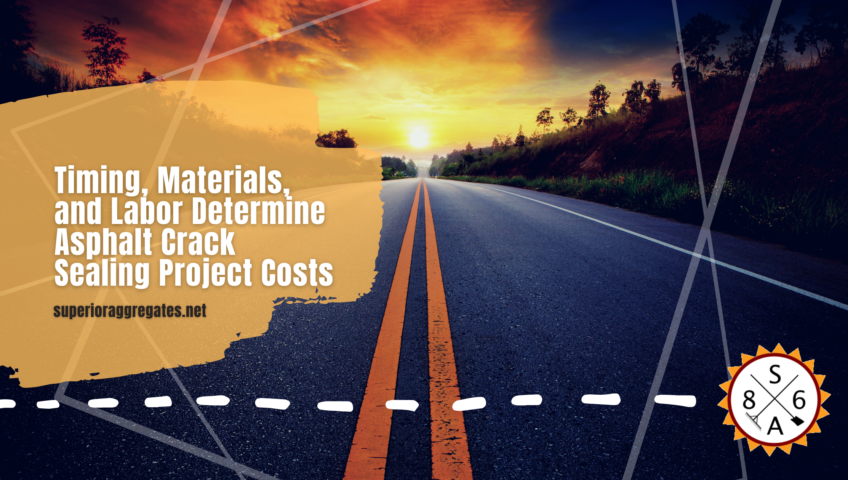
7 Pavement Preservation Treatments for Your Asphalt Surface
Constructing an asphalt surface such as a driveway, parking lot, or basketball court is a significant financial investment, so it only makes sense to protect it. That means regular maintenance should be performed to preserve the integrity of your asphalt surface and extend its lifespan.
We’re here to help you get the most out of your asphalt surface. In this article, we’ll discuss 7 pavement preservation treatments for your asphalt surface.
1. Routine Maintenance
Routine maintenance is necessary to prevent damage and staining. Fuel and oil from vehicles, as well as leaves and debris, can lead to permanent stains on asphalt surfaces. Oil and fuel spills can also seep into the pavement, leading to cracking and other damage such as potholes. Rock and gravel can also harm the surface when they’re run over by cars.
Asphalt surfaces should be swept frequently, especially after storms, to remove dirt and debris. Car oil and fuel, meanwhile, should be cleaned immediately using a long-handled brush and a mixture of water and either powdered detergent, dish soap, or baking soda.
2. Sealcoating
Sealcoating is another great way to preserve the integrity of your driveway or asphalt surface and make it “pop” again. Many people wait too long to sealcoat surfaces, which can lead to premature wear and a faded, gray color. Consider sealcoating every two years.
The benefits include:
- Prolonging the surface’s lifespan.
- Preventing water from seeping beneath the surface and causing cracks and other damage.
- Restoring the black color.
- Protecting the surface from harmful UV rays.
3. Crack Sealing
Cracks are bound to sprout up on asphalt surfaces over time, and if you wait too long to fix them with a crack filling or crack sealing, they’ll keep spreading. Although this service can be done throughout the year, one of the best times to contact asphalt companies is after winter. The constant freeze-thaw cycle can wreak havoc on asphalt surfaces.
4. Patching
Like cracks, potholes are also a common enemy of asphalt and can form when water seeps into cracks, freezes, and expands. Potholes are not only an eyesore, but they can lead to trips and falls, and vehicle damage. Patching these areas is an extremely cost-effective solution to improving the appearance and safety of your asphalt surfaces, as well as extending their lifespan.
5. Overlays
Asphalt overlaying is a method of applying about two inches of asphalt over areas of the existing base layer that have deteriorated due to significant potholes, cracks, or uneven surfaces. An overlay can extend the life of your asphalt surface by as much as 15 years depending on its age.
6. Slurry Sealing
Slurry sealing is a type of sealcoating used to protect asphalt and add value to asphalt surfaces. While normal sealcoating uses liquid asphalt, slurry sealing contains water, aggregates, and asphalt emulsion. Slurry sealing is commonly applied every five to seven years on roads that have received severe deterioration due to traffic.
7. Microsurfacing
Microsurfacing is an asphalt maintenance technique that can extend the life of blacktop roadways by an average of five to seven years. It’s a third less expensive than repaving and is commonly used by local governments for roads. Microsurfacing is the process of using a mixture of aggregate, water, and asphalt emulsion and adding it to an existing surface. Microsurfacing doesn’t rely on water evaporation in the asphalt emulsion, and, instead, uses chemical additives that can harden quicker.
Constructing an asphalt surface such as a driveway, parking lot, or basketball court is a significant financial investment, so it only makes sense to protect it. That means regular maintenance should be performed to preserve the integrity of your asphalt surface and extend its lifespan.
We’re here to help you get the most out of your asphalt surface. In this article, we’ll discuss 7 pavement preservation treatments for your asphalt surface.
1. Routine Maintenance
Routine maintenance is necessary to prevent damage and staining. Fuel and oil from vehicles, as well as leaves and debris, can lead to permanent stains on asphalt surfaces. Oil and fuel spills can also seep into the pavement, leading to cracking and other damage such as potholes. Rock and gravel can also harm the surface when they’re run over by cars.
Asphalt surfaces should be swept frequently, especially after storms, to remove dirt and debris. Car oil and fuel, meanwhile, should be cleaned immediately using a long-handled brush and a mixture of water and either powdered detergent, dish soap, or baking soda.
2. Sealcoating
Sealcoating is another great way to preserve the integrity of your driveway or asphalt surface and make it “pop” again. Many people wait too long to sealcoat surfaces, which can lead to premature wear and a faded, gray color. Consider sealcoating every two years.
The benefits include:
- Prolonging the surface’s lifespan.
- Preventing water from seeping beneath the surface and causing cracks and other damage.
- Restoring the black color.
- Protecting the surface from harmful UV rays.
3. Crack Sealing
Cracks are bound to sprout up on asphalt surfaces over time, and if you wait too long to fix them with a crack filling or crack sealing, they’ll keep spreading. Although this service can be done throughout the year, one of the best times to contact asphalt companies is after winter. The constant freeze-thaw cycle can wreak havoc on asphalt surfaces.
4. Patching
Like cracks, potholes are also a common enemy of asphalt and can form when water seeps into cracks, freezes, and expands. Potholes are not only an eyesore, but they can lead to trips and falls, and vehicle damage. Patching these areas is an extremely cost-effective solution to improving the appearance and safety of your asphalt surfaces, as well as extending their lifespan.
5. Overlays
Asphalt overlaying is a method of applying about two inches of asphalt over areas of the existing base layer that have deteriorated due to significant potholes, cracks, or uneven surfaces. An overlay can extend the life of your asphalt surface by as much as 15 years depending on its age.
6. Slurry Sealing
Slurry sealing is a type of sealcoating used to protect asphalt and add value to asphalt surfaces. While normal sealcoating uses liquid asphalt, slurry sealing contains water, aggregates, and asphalt emulsion. Slurry sealing is commonly applied every five to seven years on roads that have received severe deterioration due to traffic.
7. Microsurfacing
Microsurfacing is an asphalt maintenance technique that can extend the life of blacktop roadways by an average of five to seven years. It’s a third less expensive than repaving and is commonly used by local governments for roads. Microsurfacing is the process of using a mixture of aggregate, water, and asphalt emulsion and adding it to an existing surface. Microsurfacing doesn’t rely on water evaporation in the asphalt emulsion, and, instead, uses chemical additives that can harden quicker.




